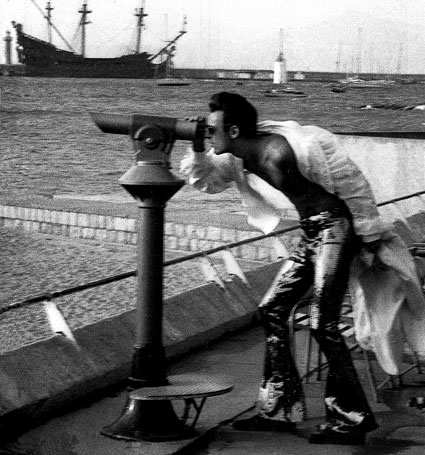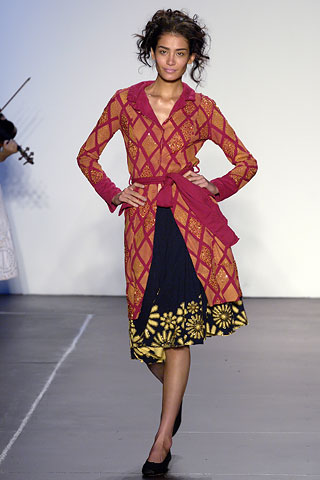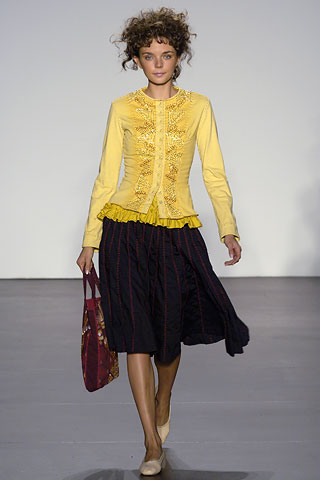Intelligent Design 
In the fashion industry, it’s not enough to be a talented designer. To be successful you must be self-sufficient when it comes to making shrewd business decisions. How to keep production costs down? Shall assemblage of the garments be done in Hong Kong or North Carolina? Will the integrity of the materials used be compromised in the pursuit of maximum profit?
Apart from these generalities there are two questions that are seldom asked: How is production going to impact the environment? The community? Katharine Hamnett, Natalie Chanin and Enrico Marone-Cinzano of Project Alabama and Peter Ingwersen of Noir ask themselves these questions, and likely can feel good about the answers.

image: www.katharinehamnett.com
No doubt there are others, but I chose Katharine Hamnett, Noir and Project Alabama to represent all who act on their conscience in the fashion industry because, quite simply, their clothes are beautiful and well-crafted. Which is the point in fashion.

image: Project Alabama s/s 2006 www.style.com
To learn more about the environmental question, two sources I highly recommend watching/listening to are a couple of interviews with Katharine Hamnett:
http://www.katharinehamnett.com/Editorial/00s (BBC News, May 2005)
http://www.bbc.co.uk/radio4/womanshour/2004_51_fri_05.shtml
Along with making beautiful clothes, sustainability is the aim for brands like Noir and Project Alabama. Peter Ingwersen of Noir has established the Noir Foundation, through which a percetage of profits is returned to those in Africa who aid in production of the cotton fabrics used in Noir collections. I was first introduced to Noir through www.fashionologie.com. The interview with Peter Ingwersen can be read here:
http://www.fashionologie.com/fashionologie/2006/03/index.html (15th item)
Illuminati II is the label under which sub-Saharan cotton is made for Noir. From what I understand, it will be available to the rest of the industry in 2008 (but I’m not clear if it will be available for consumption by the little people like me…working with such fabric sounds scrumptious!!)
Perhaps most of all, Project Alabama appeals to me the most because I’ve lived in the South. Before living there I had never witnessed such enchanting landscapes, met such giving people or encountered such grinding poverty. Project Alabama aims to, “keep the fading domestic arts alive” through the work for their collections. Keeping the local talent employed not only so they can support themselves and their families, but also to pass on their craft is setting an example we should all take to heart.

image: Project Alabama s/s 2006 www.style.com
I believe that those who take the most pride in their work do not compromise their ethics. (This is easy for me to say because I don’t sell the garments I make at the moment. I only observe others running businesses that sell clothes and accessories.) It sounds misanthropic, but I don’t believe it is in human nature to measure our actions against the impact they’ll make on future generations and the future of our planet. Such conscience and foresight as can be found in the folks mentioned above suggest a more evolved intelligence.













